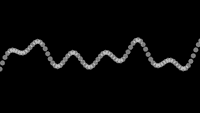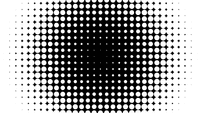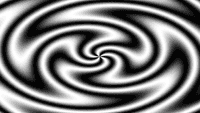Examples+
Sine Cosine
Linear movement with sin() and cos(). Numbers between 0 and PI2 (TWO_PI which angles roughly 6.28) are put into these functions and numbers between -1 and 1 are returned. These values are then scaled to produce larger movements.
/**
* Sine Cosine.
*
* Linear movement with sin() and cos().
* Numbers between 0 and PI*2 (TWO_PI which angles roughly 6.28)
* are put into these functions and numbers between -1 and 1 are
* returned. These values are then scaled to produce larger movements.
*/
float x1, x2, y1, y2;
float angle1, angle2;
float scalar = 70;
void setup() {
size(640, 360);
noStroke();
rectMode(CENTER);
}
void draw() {
background(0);
float ang1 = radians(angle1);
float ang2 = radians(angle2);
x1 = width/2 + (scalar * cos(ang1));
x2 = width/2 + (scalar * cos(ang2));
y1 = height/2 + (scalar * sin(ang1));
y2 = height/2 + (scalar * sin(ang2));
fill(255);
rect(width*0.5, height*0.5, 140, 140);
fill(0, 102, 153);
ellipse(x1, height*0.5 - 120, scalar, scalar);
ellipse(x2, height*0.5 + 120, scalar, scalar);
fill(255, 204, 0);
ellipse(width*0.5 - 120, y1, scalar, scalar);
ellipse(width*0.5 + 120, y2, scalar, scalar);
angle1 += 2;
angle2 += 3;
}
This example is for Processing 4+. If you have a previous version, use the examples included with your software. If you see any errors or have suggestions, please let us know.





